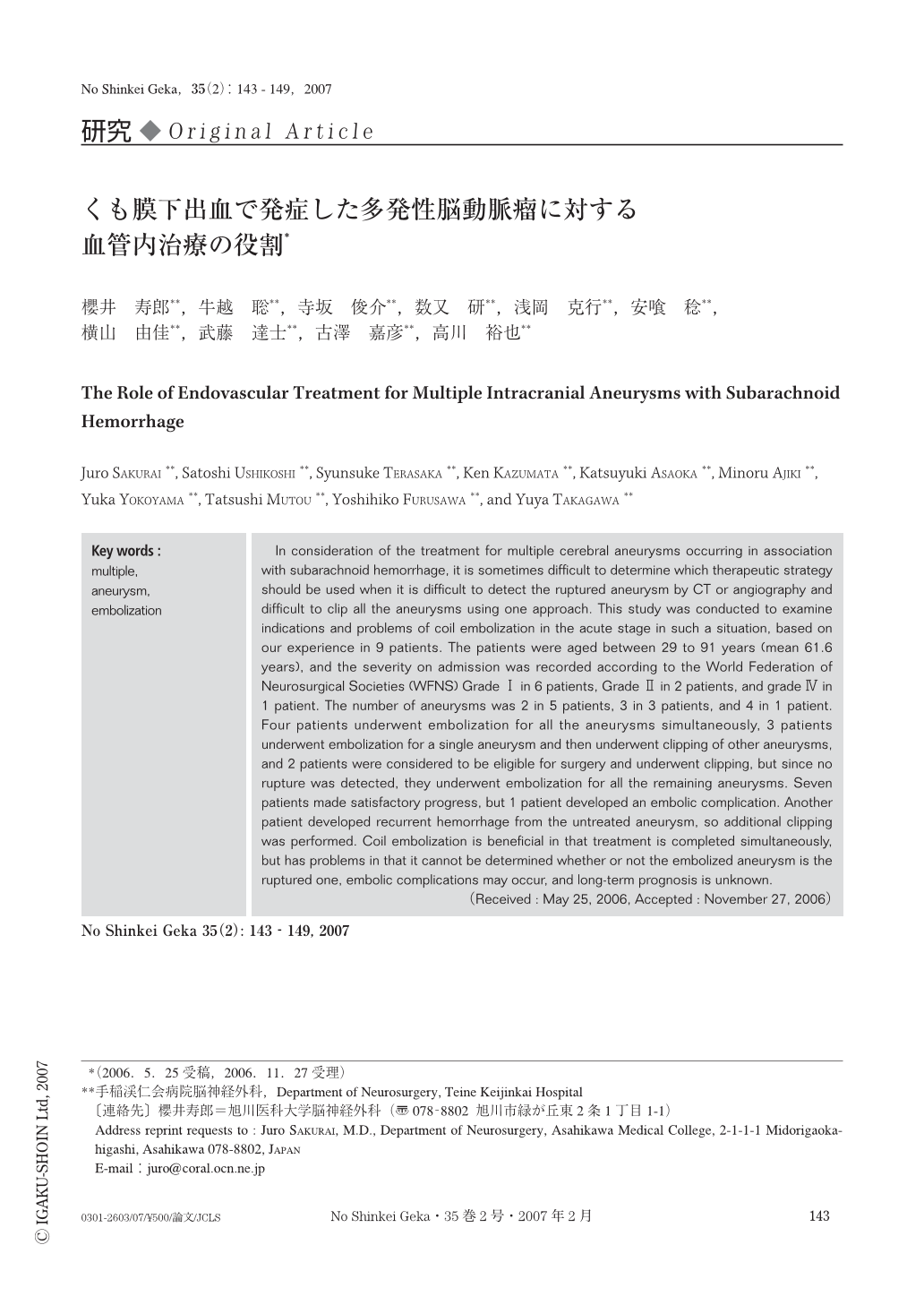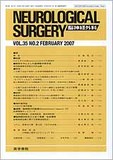Japanese
English
- 有料閲覧
- Abstract 文献概要
- 1ページ目 Look Inside
- 参考文献 Reference
Ⅰ.はじめに
くも膜下出血で発症した多発性脳動脈瘤の治療を考える際,CTや血管撮影などの画像診断上,破裂動脈瘤の推定が困難で,かつ,同一の開頭ですべての動脈瘤のクリッピング術が難しい場合,どのような治療戦略でのぞむか判断に苦慮することがある.このような状況における急性期の塞栓術の適応,問題点につき検討する.
In consideration of the treatment for multiple cerebral aneurysms occurring in association with subarachnoid hemorrhage, it is sometimes difficult to determine which therapeutic strategy should be used when it is difficult to detect the ruptured aneurysm by CT or angiography and difficult to clip all the aneurysms using one approach. This study was conducted to examine indications and problems of coil embolization in the acute stage in such a situation, based on our experience in 9 patients. The patients were aged between 29 to 91 years (mean 61.6 years), and the severity on admission was recorded according to the World Federation of Neurosurgical Societies (WFNS) GradeⅠin 6 patients, GradeⅡin 2 patients, and gradeⅣin 1 patient. The number of aneurysms was 2 in 5 patients, 3 in 3 patients, and 4 in 1 patient. Four patients underwent embolization for all the aneurysms simultaneously, 3 patients underwent embolization for a single aneurysm and then underwent clipping of other aneurysms, and 2 patients were considered to be eligible for surgery and underwent clipping, but since no rupture was detected, they underwent embolization for all the remaining aneurysms. Seven patients made satisfactory progress, but 1 patient developed an embolic complication. Another patient developed recurrent hemorrhage from the untreated aneurysm, so additional clipping was performed. Coil embolization is beneficial in that treatment is completed simultaneously, but has problems in that it cannot be determined whether or not the embolized aneurysm is the ruptured one, embolic complications may occur, and long-term prognosis is unknown.

Copyright © 2007, Igaku-Shoin Ltd. All rights reserved.


